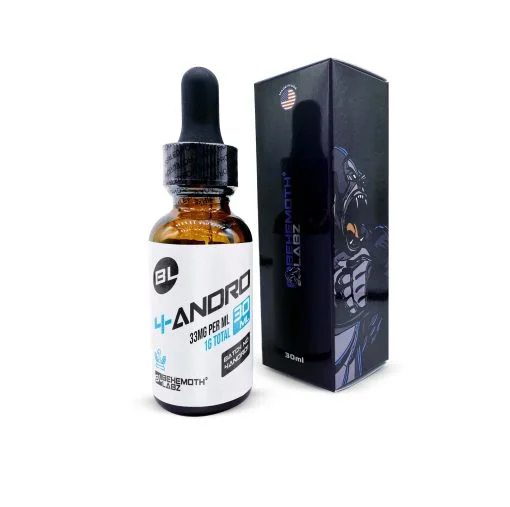SARMs
Cardarine vs Ostarine | Which SARM is Better
When designing a study focused on physiological performance, metabolic function, or cellular signaling, choosing between Cardarine (GW501516) and Ostarine (MK-2866) can pose a challenge for researchers.
These compounds are often evaluated for their distinct biochemical properties and potential applications in laboratory settings. Cardarine is frequently explored for its effects on metabolic pathways and oxidative processes, while Ostarine has been the subject of research related to androgen receptor modulation and protein synthesis.
Although both agents fall under the umbrella of investigational compounds, their differing mechanisms and observed outcomes in research models can make one more suitable than the other, depending on the specific research objectives. This article compares Cardarine and Ostarine based on current scientific literature, their proposed mechanisms of action, and research-based findings.
What are Cardarine & Ostarine?
Cardarine (GW501516), also referred to as Endurobol, is not classified as a SARM but is instead a Peroxisome Proliferator-Activated Receptor Delta (PPARδ) agonist. It is commonly investigated for its potential to influence energy metabolism and mitochondrial biogenesis. Preclinical studies have examined its role in increasing oxidative capacity and modulating lipid utilization in tissues.
Ostarine (MK-2866), also known as Enobosarm, is a Selective Androgen Receptor Modulator (SARM). It has been studied in various in vivo and in vitro models for its ability to bind selectively to androgen receptors in skeletal tissues without significantly impacting other endocrine functions. It is often explored for its potential impact on cellular signaling pathways associated with anabolic activity.
Both compounds are strictly intended for research use only and are not approved for human consumption.
How Do Cardarine and Ostarine Work?
Cardarine functions through activation of the PPARδ receptor, a nuclear receptor involved in regulating genes responsible for fatty acid transport, glucose metabolism, and mitochondrial function. Studies have shown that this activation may enhance fatty acid oxidation and energy expenditure, especially in skeletal muscle and hepatic tissues. This mechanism makes Cardarine a subject of interest in metabolic and endurance-related research models.
Ostarine, in contrast, exerts its effects by binding to androgen receptors (ARs) in a selective manner. This receptor engagement may modulate gene expression related to protein metabolism and tissue preservation, without the broader endocrine disruption often seen with non-selective androgenic compounds. Its selective affinity allows researchers to study the tissue-specific activity of androgen signaling without extensive off-target effects.
Cardarine Vs Ostarine – Potential Research Applications
The following contrast in the benefits of Cardarine and Ostarine sets these two apart.
1. Cardarine Research Applications
- Metabolic Regulation: Cardarine has been studied in animal models for its role in regulating lipid metabolism. Some preclinical data suggest increased reliance on lipid substrates for ATP production during endurance-related activity.
- Mitochondrial Biogenesis: Research indicates that PPARδ activation may upregulate PGC-1α expression, which is linked to enhanced mitochondrial formation and energy output.
- Endurance Studies: Some rodent models have reported increased endurance capacity, potentially due to improved oxidative metabolism and reduced lactate accumulation.
- Oxidative Stress and Inflammation: Investigations are underway into the compound’s potential antioxidant and anti-inflammatory effects under experimental conditions.
2. Ostarine Benefits
- Androgen Receptor Modulation: Ostarine is often used in studies exploring receptor selectivity and tissue-specific responses to anabolic stimuli, particularly in skeletal and bone tissues.
- Preservation of Skeletal Tissue: Animal studies suggest that Ostarine may contribute to tissue maintenance in catabolic conditions without inducing significant androgenic effects in non-target organs.
- Bone Density Studies: Ostarine is also being explored in research on bone mineral density and its potential role in supporting skeletal integrity under various experimental conditions.
- Cellular Differentiation: In vitro models have investigated Ostarine’s impact on myogenic and osteogenic differentiation pathways.
Cardarine Versus Ostarine: Which One is Safer in Research Settings?
When it comes to side effects, Ostarine wins as it has a safer profile in research subjects than Cardarine. Both compounds are generally safe for study purposes under controlled conditions during research investigations. However, some side effects may be associated in subjects with their use as reported in clinical studies.
Results: Cardarine Vs Ostarine
Comparative results from animal studies and cell-based assays have shown that:
- Cardarine may lead to increased lipid utilization and enhanced endurance over an 8-week protocol in certain rodent models, with an approximate body weight impact of 7–8% under specific conditions.
- Ostarine has shown modest increases in skeletal tissue retention and reduced catabolic activity, with around 5% body weight variation in similar research durations.
It is important to note that results vary based on species, dose, study design, and environmental conditions. These compounds are not interchangeable and should be chosen based on the research hypothesis.
Which One is Better?
The choice between Cardarine and Ostarine depends entirely on the research objective:
- Use Cardarine if the study focuses on metabolic processes, oxidative stress, or endurance pathways.
- Choose Ostarine for investigations related to androgen receptor function, tissue-specific anabolic activity, or musculoskeletal studies.
Neither compound is “better” in a general sense—they serve distinct roles in scientific research, and their utility is determined by the hypothesis and model system under investigation.
Conclusion
Cardarine and Ostarine are experimental compounds under continuous study for their unique biochemical effects in laboratory models. While both have been investigated for their potential roles in metabolic and androgenic research, they differ in mechanism, application, and safety profile.
These compounds are strictly intended for research purposes only. Any use outside of a controlled, preclinical, or academic setting is not supported and may pose serious health risks.
When used responsibly in well-designed studies, they can offer insights into complex biological systems, paving the way for future innovations in biomedical research.
Frequently Asked Questions (FAQs)
What is the best place to buy Cardarine and Ostarine online?
Cardarine and Ostarine are available for research purposes only at Behemoth Labz. All products are third-party tested and provided with certificates of analysis to ensure quality and compliance with research standards.
Does Ostarine raise testosterone?
No. Research has not shown Ostarine to increase testosterone levels in laboratory models.
What is Cardarine best used for in studies?
Cardarine is typically used to study metabolic regulation and oxidative capacity in various in vivo and in vitro models.
Does Ostarine affect metabolism?
Yes. Some research has shown that Ostarine may influence basal metabolic activity in preclinical studies involving rodent models.
Reference
- Kintz, Pascal, et al. “Peroxisome proliferator-activated receptor delta agonist (PPAR-δ) and selective androgen receptor modulator (SARM) abuse: clinical, analytical and biological data in a case involving a poisonous combination of GW1516 (cardarine) and MK2866 (ostarine).” Toxics 9.10 (2021): 251.
- Bianchi, Vittorio Emanuele, and Vittorio Locatelli. “GW501516 (Cardarine): Pharmacological and Clinical Effects.” Genet. Mol. Med. 5.1 (2023): 1-12.
- Park, Jeremy, and Joon Young Kim. “Cardarine (GW501516) Effects on Improving Metabolic Syndrome.” Journal of Health, Sports, and Kinesiology 2.2 (2021): 22-27.












